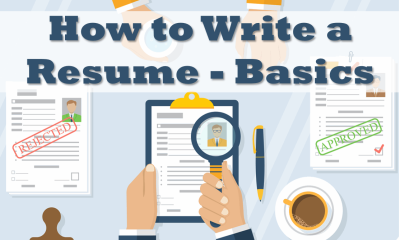Education
Writing An Art Grant Proposal: The Basics

Though I haven’t written grants full time, more than one position I’ve worked included grant writing. After having the opportunity to sit with the powers that be that actually give grant money, I’ve been able to tweak what will help someone looking a grant and what will be a blockade for them.
1. Grammar and Spelling
Much like writing a résumé grammar and spelling are essential. It is a first glance reflection on the time and effort you put into your grant proposal. Be aware of common mistakes made by people such as jumping tenses, from present tense to past tense. Also, check your spelling yourself. Notice, I didn’t write, “use spell check.” Spell check often doesn’t acknowledge the proper spelling of names, as well as switching a word to the closest proper spelling as opposed to the word you actually need. If you do use spell check, take your time and actually look at the word before clicking, “change.”
Also, remember to use proper punctuation, and capital letters. This may sound like a silly reminder, but I’ve seen many résumés and important paperwork littered with IM and text message type short hand. It is a sure fire way to get your proposal sent to the “no” pile.
2. Theme
Unfortunately, art is one place where being very diverse can actually work against you. I make a variety of items from jewelry, to hand stitched journals, collage style cigar box purses and collage in general. Most galleries prefer work to be a particular theme or style to allow for flow when displaying the work. It is understandable, but it can feel limiting.
3. Superfluous is a no-no
What the heck is superfluous? “Superfluousadj. Being beyond what is required or sufficient.” (www.answers.com) – It essentially means cut off the fat. Read your proposal at least twice. Have someone else take a look at it, and when are done, read it one last time. Take out any unnecessary phrases or words. If a sentence or paragraph can be compacted without losing it’s meaning, then do so. People in general get bored easily. Adding words that are padding can attribute to a reader losing interest. Keep it simple.
4. The Pitch – Selling Yourself
You want to sound competent, confident, creative and not utterly full of yourself. There is a fine line between confident and cocky. Try not to cross it. You want the reader to feel as if they do give you funding that you be able to fulfill your obligation but you don’t want to come off as a prima donna artist. Remember to answer this: Why should you be given the funds instead of all the other souls applying? What makes you and your work stand out and asked to be noticed?
5. Budget
Be brave but realistic. It can’t hurt to ask for the max available for the grant. But if you are asking for a $5000 grant, you have to show on paper where every penny is going. Though you need to pay yourself, you can’t ask that $4000 be your fee and the rest for supplies, promotion, space rental, etc. Also, have a Plan B for yourself, (not for the grant people); in case you get a smaller amount. If your project requires the max in funds, realize if you don’t get the max, there may be a chance you will forfeit the grant by not being able to bend.
6. Time Frame and Flexibility
Be realistic. If you cannot produce twenty new pieces by a certain date, don’t say you can. Grants allow some flexibility in the final product. But if you say it, you better be able to do it. In regards to flexibility; how flexible is your budget? If you don’t get the $3000 grant, but a $1800 grant what do you do? Do you say forget it? Or do you sit with the grant coordinator and work the numbers and determine how many new pieces can be created with the new budget? Either way, a grant is a grant; which is another notch on your résumé.
7. Résumé
What do you do if yours is a bit light? When writing your artist résumé be sure to include any classes you may have taught, paid or otherwise. If you have created classes specifically for an organization denote that as well. Which sounds better: “Book Making Class from 2006-2009” or “Book Making Classes that include hand stitching, metal patinas, and collage basics? This class was the first of its kind in the Jane Doe School of Art.” Resume writing services are growing in popularity these days, so if you need any help with writing your resume you should consider checking these services.
Also, if you have a website or shop online, such as an Etsy shop, include information/website, as well as a blurb on the work, and if you did the layout and html yourself. If you are going to show an Ebay or Etsy shop, be sure your pictures are clear, and your feedback exceptional.
Any other grant or funding that you are received previously is definitely a plus, and should be included. Privately commissioned work can also go on your résumé, with a brief description on the work.
8. Research the organization that is providing the grant
Most will list past grantees and their projects. This can help give you a feel for what the organization is looking for and a little research could help assist in the direction you may want to go.
Lastly, remember once you’ve done all the work, included clear, crisp pictures, and have filled out the pages of application; it is out of your hands. Slap a stamp on it, mail it, and let it go. After all, you make art for the love; the money is just a bonus.
-

 Tech11 years ago
Tech11 years agoCreating An e-Commerce Website
-

 Tech11 years ago
Tech11 years agoDesign Template Guidelines For Mobile Apps
-

 Business6 years ago
Business6 years agoWhat Is AdsSupply? A Comprehensive Review
-

 Business10 years ago
Business10 years agoThe Key Types Of Brochure Printing Services
-

 Tech8 years ago
Tech8 years agoWhen To Send Your Bulk Messages?
-

 Tech5 years ago
Tech5 years ago5 Link Building Strategies You Can Apply For Local SEO
-

 Law5 years ago
Law5 years agoHow Can A Divorce Lawyer Help You Get Through Divorce?
-

 Home Improvement6 years ago
Home Improvement6 years agoHоw tо Kеер Antѕ Out оf Yоur Kitсhеn



































